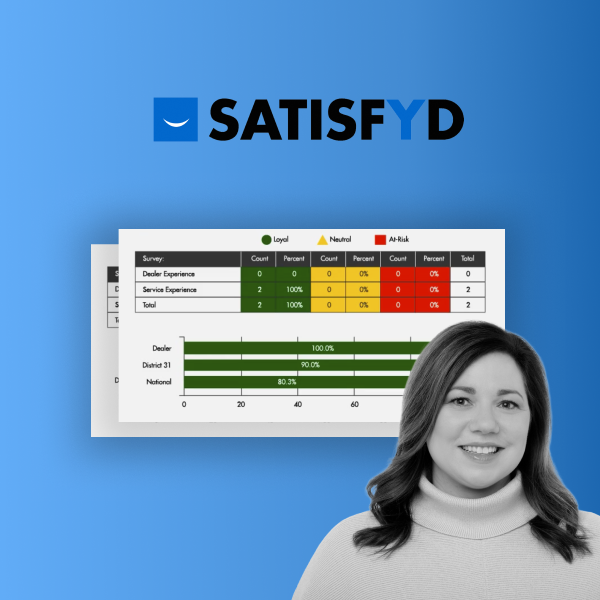Today, many organizations use some sort of business intelligence (BI) solution to manage their operations and inform decisions. These companies likely rely on data analysis to monitor performance, track trends, and identify improvement opportunities.
But beyond analyzing data and generating reports, they need to focus on putting high-value insights in the hands of every team member and promoting a data-driven company culture that encourages employees to integrate data into their everyday workflows.
Self-service analytics is a type of BI that allows users at every level of an organization to access and analyze data. Organizations that leverage self-service tools often see higher rates of BI adoption and a workforce that uses data to inform a wide variety of business processes.
In this blog, we'll explain the concept of self-service analytics as it relates to BI in general. Then, we'll highlight the benefits and applications of self-service tools in a business environment.
What is Self-Service Analytics?
As the name suggests, self-service analytics is a type of BI through which individuals can analyze data themselves without relying on analysts or an IT team for support.
Self-service analytics plays a major role in decentralizing and democratizing data access across all types of organizations. It breaks down silos and allows everyone to actively participate in reporting, analysis, and data-driven decision-making.
Self-service analytics empowers non-technical users to participate in strategic BI-related initiatives and integrate data into their daily operations. If implemented correctly, self-service tools boost BI adoption and reduce the manual reporting burden for the analytics department.
The result? End-users can access the insights they need quickly and easily, while analysts are freed up to spend more time on strategic, long-term initiatives and special projects.
The Benefits of Self-Service Analytics
Self-service reporting and data analysis tools offer many benefits to end-users and the organization. Beyond reducing the manual workload for your IT department or team of analysts, a self-service analytics solution can help your organization:
1. Increase reporting efficiency and staff productivity
It can sometimes take days or weeks for a small team of analysts to fulfill report requests from across the organization. This scenario leaves business users without the critical insights they need to make decisions. It also puts a significant amount of stress on the analysts who must manually build out a long list of complex reports.
By giving your end-users immediate access to data and intuitive analytics tools, you enable them to create or update reports more quickly than if they had to wait for requests to be fulfilled by a small team of analysts. This means everyone can access the latest insights in a timely manner without bogging down your IT team with a long list of report requests.
2. Generate more accurate results
Each time your data changes hands or gets processed through another system, the risk of errors or discrepancies increases. Plus, analysts can't double-check the accuracy of data they aren't at all familiar with.
Self-service analytics tools allow the users most familiar with the data to upload and generate analyses themselves. This reduces the number of steps involved in report generation and puts data in the hands of those with contextual knowledge to correct potential errors before analyses are run.
3. Improve data accessibility and cross-functional visibility
Siloed reporting tools make it difficult for end-users to understand the context behind reports or explore related insights from other departments. On the other hand, self-service analytics gives everyone access to a wealth of data-driven knowledge and the tools they need to analyze, dig deeper, and combine insights to benefit their team and organization as a whole.
A well-maintained self-service analytics solution ensures everyone works from the same source of truth toward common goals. Plus, it allows them to see what other teams and departments are working on, giving them new opportunities to collaborate or gain a deeper understanding of their data by contextualizing it with insights from other business areas.
4. Give users the freedom to customize reports and dashboards
Organizations that rely solely on legacy BI tools often send out the same batch of reports to entire departments or even their entire workforce. And while these reports are likely valuable to certain decision-makers, they may be missing information other team members need to guide their daily work or shape strategic initiatives.
So rather than requiring users to send in separate requests each time they want to set up a custom dashboard or generate a new report, self-service analytics solutions allow them to create their own. With the right self-service tools, end-users can create, update, and zoom in or out of various reports and visualizations in just a few clicks. That way, they can access and present the data that's most valuable to them without waiting for another team to build each new report one by one.
5. Scale your BI and analytics efforts across departments
When your organization's BI solution requires advanced technical knowledge, your bandwidth for report generation and data analysis depends heavily on the size of your IT team. And if your in-house analytics expert becomes bogged down or leaves the organization, you'll take a significant hit in reporting productivity.
The good news is, a self-service analytics tool paves the way for BI growth and naturally scales up your reporting efforts by putting the power of report generation in the hands of every employee, not just those with deep technical knowledge.
This means your reporting efforts are spread across teams rather than dependent on one or a few expert employees, protecting your operations from staff turnover and bandwidth constraints and making it easier to scale your efforts as your organization grows.
Enable Self Service With TARGIT’s User-Friendly BI Solution
Your BI and analytics solution should be accessible to users across your organization, not just a small team of analysts.
At TARGIT, we understand the combined value of power and accessibility. That’s why our all-in-one platform, TARGIT Decision Suite, is designed for business users and technical experts alike.
Plus, we offer strategic support and guidance from day one of your implementation to ensure high adoption rates and data accessibility at every level of your business.
Interested in learning more about TARGIT’s BI and analytics platform? Watch our on-demand webinar, Beginner’s Guide to TARGIT, to get a firsthand look at our solution architecture, core features, and report-building capabilities. Or request a personalized demo to see how TARGIT can help you put decision-leading insights in your team’s hands.






